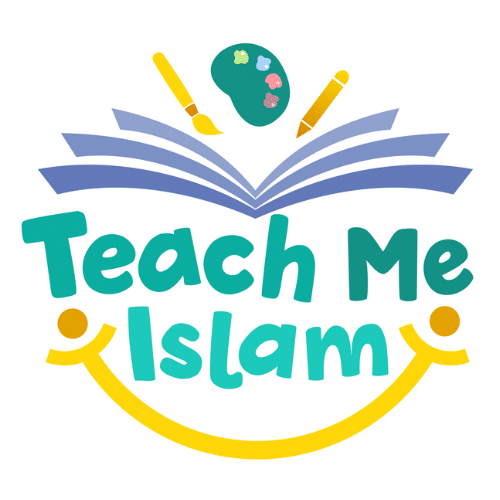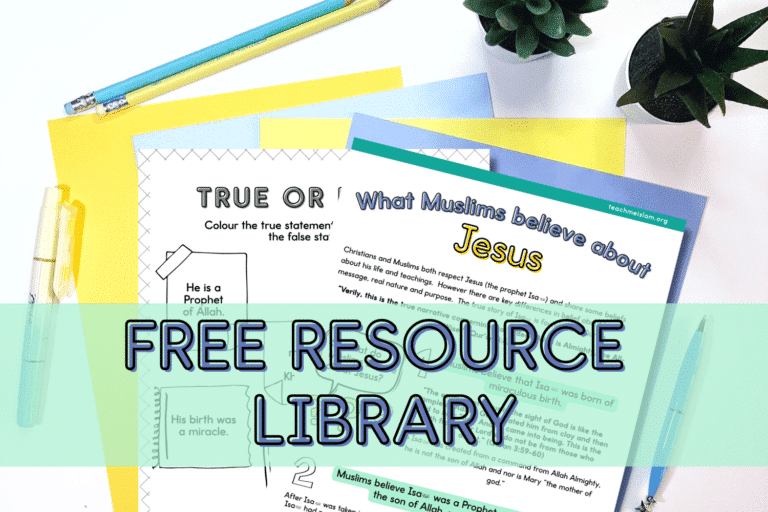What if your child is just not understanding what you are teaching in Islamic Studies? It can be really tough because more than any other subject you desperately want them to enjoy and understand Islamic topics. Aside from ensuring that the difficulty level is appropriate, there are additional ways to help your kids engage and learn effectively. Scaffolding is a teaching technique that provides structured support to learners, enabling them to grasp new concepts and skills gradually. Implementing scaffolding strategies in homeschooling can really help kids progress where they were previously stuck. These are also particularly helpful for parents who are teaching children with learning challenges. Here are some effective ways to incorporate scaffolding techniques:

Assessment of Prior Knowledge:
The first scaffolding step is to begin by understanding the child’s existing knowledge base on the subject. There is no point in launching into the conditions of hajj if they have no idea what hajj even is. Sometimes kids act lost because they are missing a key piece of fundamental information you presume they know already.
So how can you assess what they know already? Often a few questions or an informal discussion can give you a good idea of your starting point. More formal techniques include mini-tests. I recommend a quick true/false quiz that doesn’t seem intimidating but gives you a better idea of their knowledge of the topic.

Breaking Down Complex Tasks:
Our model teachers for teaching about Islam are the prophets and messengers. Shaykh Fawzaan wrote: The best example of giving da’wah is to be found in the method of the Prophet (sallAllaahu’alaihiwasallam) – it is the most perfect and complete methodology – in that he (sallAllaahu’alaihiwasallam) remained in Makkah for thirteen years, calling the people to tawheed and forbidding them from shirk, before (he ordered) them with Prayer, Zakaat , Fasting and Hajj, and before he (sallAllaahu’alaihiwasallam) forbade them from usury, fornication, theft and murder.
It’s therefore best to break down lessons into smaller parts and ensure that children understand each step before moving on to the next stage. The smaller, manageable steps help to prevent overwhelm.
You probably do this naturally, for example, you likely won’t teach about salah all at once. You’ll begin with the opening takbeer and progress from there. This method of breaking down complex tasks is particularly valuable when you think of it as just one step or topic. That’s when it is a great idea to sit down with a pen and paper and challenge yourself to break it down into smaller steps.
Parents of autistic children are likely very familiar with this technique. Toilet training for example is broken down into tiny steps, like entering the bathroom, removing clothes, sitting on the toilet…etc.

Modelling and Demonstration:
Parents know the sometimes scary power of modelling. How many times have you noticed your child is doing what you are doing rather than what you are saying? Like it or not, you are modelling constantly.
You can use this to really help your child understand Islamic studies. Some of that happens naturally, for example, you teach the manners of the masjid while taking them to visit the masjid. Other ways of using modelling and demonstrating include using visual aids, diagrams, or real-life scenarios for better comprehension.
This is where homeschoolers are at a serious advantage because once a lesson is over you can see where you can apply the concepts learned organically in their life. For example, if your child is feeling anxious about making friends, you can remind them of what they learnt about Tawheed. Who has decided who you will meet in your life? Who knows a good heart and can see hearts? Who should you make du’aa to for good friends?

Providing Structured Resources:
Well-designed resources can also help you with scaffolding your lessons. There are some homeschool methodologies that encourage you to give your children ‘real’ books as early as possible. This isn’t recommended for Islamic Studies where you should learn fundamentals, be taught by a teacher who understands your level and what is appropriate for you and where learning concepts that are too difficult too early can actually be very damaging.
Resources that are designed especially for children are important for teaching your children Islamic studies in a way they can actually understand.
In this Mothers of the Believers series, there are two levels of reading passage for each resource including activities that range in difficulty. This enables you to start with a more accessible passage and then choose activities which are the right level for your child. You can always return the following year and use the more challenging passage and complete the other activities.

Offering Scaffolding Tools:
There are lots of scaffolding tools you can use to help your kids learn such as graphic organizers, study guides, or step-by-step templates.
Examples of these include a wudhu poster in the bathroom, a du’aa app or a review page.
Provide mnemonic devices or visual cues to assist in memory retention. In the free Manners of Making Du’aa resource, there are symbols next to different manners and an accompanying poster project with those symbols as prompts to help kids remember. You can sign up here to download the resource from the Free Resource Library or just go direct to the library if you have already joined.

Gradual Release of Responsibility:
Again, this technique comes quite naturally. First, you start with guided instruction, gradually allowing more autonomy as the child gains proficiency. In schools, this often involves transitioning from direct instruction to collaborative learning (often group work) and then independent practice.
In a homeschool and Islamic Studies context, an example might be teaching about the prayer, asking the children to practice praying aloud (including the du’aa) so you can correct any mistakes, and then praying independently.
Common homeschool errors include focusing solely on instruction or independent work. So a parent might constantly teach and then stay at the table watching and reading the child’s work as they write (more common when there is only one or two children). Or a parent might just give a reading passage and questions and ask the child to get on with it independently.
Working through each step is important as it helps the child not only understand but feel confident in their understanding.

Feedback and Reinforcement:
It’s key to offer constructive feedback to correct errors and also reassure kids they are on the right track. Praising progress and effort boosts confidence and motivation.
It’s as simple as an encouraging word, a few positive words on their page or the ever-popular stickers!

Reflection and Review:
It’s a great idea to ask kids what they enjoyed about learning a topic, paying close attention if they mention finding certain techniques helpful. If they enjoyed making posters and using visual aids like flashcards – great! You know what to use next time!
Review is SO important in Islamic Studies because all the knowledge is significant and you don’t want kids to lose it. I really like the spiral review technique which you can read more about in this blog post. In the Child Companions, Mothers of the Believers and the 10 Promised Paradise Series, there are review packs with different activities and worksheets to help you easily incorporate review work into your schedule.

Free resources to help you teach kids about Islam
I hope you found this blog post about scaffolding techniques helpful. They serve as a supportive framework that helps you nurture your child’s academic growth and confidence. They also help you avoid the frustration of feeling ‘stuck’ or ‘lost’ when a child isn’t progressing.
If you would like to get a FREE resource that includes different levels of reading passages for you to help scaffold your lessons join the mailing list here to download a biography pack about one of the 10 Promised Jannah, Abu Ubaidah bin Jarrah(may Allah be pleased with him), and gain access to the free resource library.
Here are some other blog posts you may be interested in:
How to appeal to different kinds of learning styles in your homeschool?






